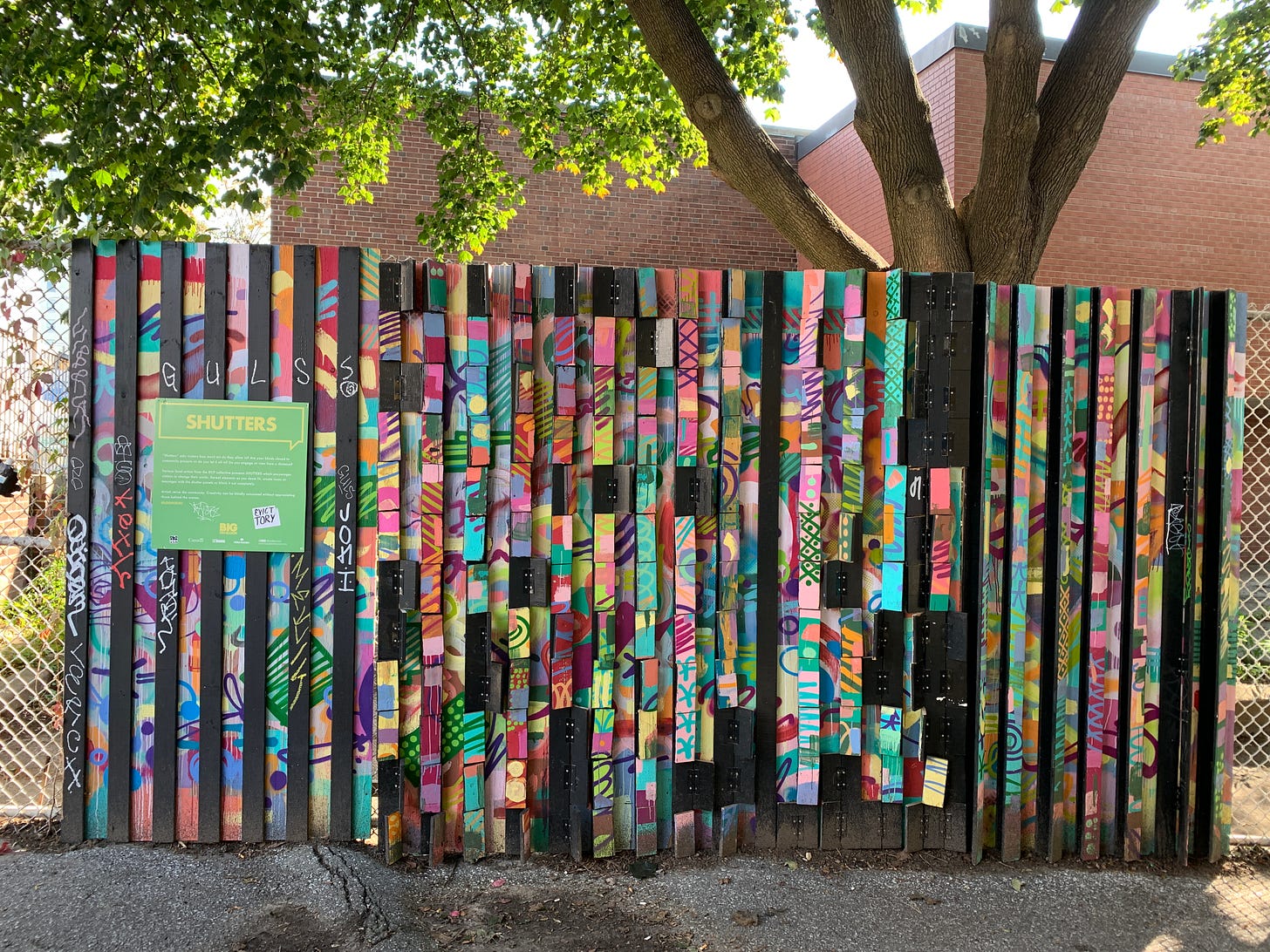Prefigurative Community Building (Part 28)
Public Art Collaboratives as Power With: Reclaiming Space, Story, and Solidarity
Art should be a commons, not a commodity
Public space is supposed to belong to everyone. But in many cities, it's regulated, surveilled, and shaped by the interests of capital and control. Art, one of humanity’s oldest tools for storytelling, identity, and resistance, often gets swept up in this, commodified for gallery walls or co-opted for branding campaigns. But public art, when created collaboratively, has the power to flip that script.
Murals, street performance, and sidewalk installations can be more than decoration. They can become shared acts of meaning-making, collective healing, and political expression. When we coordinate these projects using Power With, that is, through horizontal collaboration, shared authorship, and mutual respect, we activate art as a living commons.
This essay walks through a step-by-step guide to starting a public art collaborative that centers Power With coordination, avoids all forms of Power Over, and amplifies collective voice. We’ll close with two examples of existing projects doing just that.
Step-by-Step Guide: Starting a Public Art Collaborative Using Power With
Step 1: Root in Relationship, Not Aesthetic
Before anything is painted, performed, or planned, start by forming a group of people who want to create together, not necessarily trained artists, but storytellers, neighbors, culture bearers, and anyone moved by the idea. Ask what stories need to be told, not what images should be created.
Resource:
Step 2: Set Collaborative Agreements
Create group agreements about how decisions will be made (consensus, consent, etc.), how conflicts will be navigated, and how labor and visibility will be shared. These agreements are how Power With is enacted from the start.
Toolkits:
Step 3: Identify and Reclaim the Site
Look for spaces with meaning: a wall scarred by gentrification, a forgotten alley, a playground fence, or a frequently policed corner. Let the location inspire the medium and message. Collaborate with local residents before doing anything permanent.
Examples of Approach:
Step 4: Build a Participatory Design Process
Hold story circles, oral history sessions, or idea-jams where people can contribute memories, symbols, or dreams to shape the design. Don’t ask what people want painted, ask what needs to be remembered or reclaimed.
Creative Tools:
Step 5: Co-create the Work—No Spectators
Ensure the making of the artwork is as communal as the planning. For murals, this might look like paint days. For performance, invite rehearsals in public space. Prioritize accessibility, have roles beyond physical labor. Document the process publicly.
Resource Examples:
Step 6: Host a Public Unveiling as a Community Event
Instead of a ribbon-cutting, host a block party, teach-in, or open mic. Let the unveiling be participatory and joyful, a culmination of community voice, not an artist’s solo vision. Invite storytelling about the work, and share what the group learned.
Inspiration:
Step 7: Leave an Open Thread
Design the project so it’s never “complete.” Leave space for add-ons, layering, or future installations. Post a QR code linking to a digital story archive or invite future participation. Art that reflects living stories must also remain alive.
Ongoing Platform Ideas:
Power With, Not Power Over: What This Means in Practice
No top-down commissioning: Artists are facilitators, not gatekeepers.
Decisions are collective: No one holds “final say.”
Process is as important as product: The mural or piece isn’t the point, the collaboration is.
Accessibility is built in: From language justice to physical access to visual literacy.
Avoiding Power Over means refusing to use prestige, funding, or skill to dominate the process. It also means being actively reflexive about how race, ability, gender, and class shape voice and participation, and redistributing space accordingly.
Real-World Examples of Power With Public Art Projects
1. Trust Your Struggle Collective (U.S. & Global)
This decentralized group of radical artists centers public art as a tool of movement building. They co-create murals with community members, often focusing on immigrant justice, Black liberation, and environmental sovereignty. Their murals are designed through deep relationship and collective authorship.
https://trustyourstruggle.wordpress.com
2. Spiral Q (Philadelphia, PA)
Spiral Q uses puppet-making, pageantry, and community workshops to amplify marginalized voices in public space. From neighborhood parades to collective art builds, their practice is deeply rooted in mutual empowerment and abolitionist values.
Conclusion: Every Wall Is a Canvas, Every Corner a Stage
Public art made with Power With isn’t just about beautifying space. It’s about reclaiming voice. It’s about remembering together. And it’s about imagining the world we want to build, then painting it on the walls until it comes true.
When we create collaboratively, we resist the commodification of both space and culture. We return art to the commons. We let joy, grief, resistance, and memory spill into the street where it belongs.
In a world governed by enclosure and Power Over, to paint with others, not for them, is itself a radical act.




